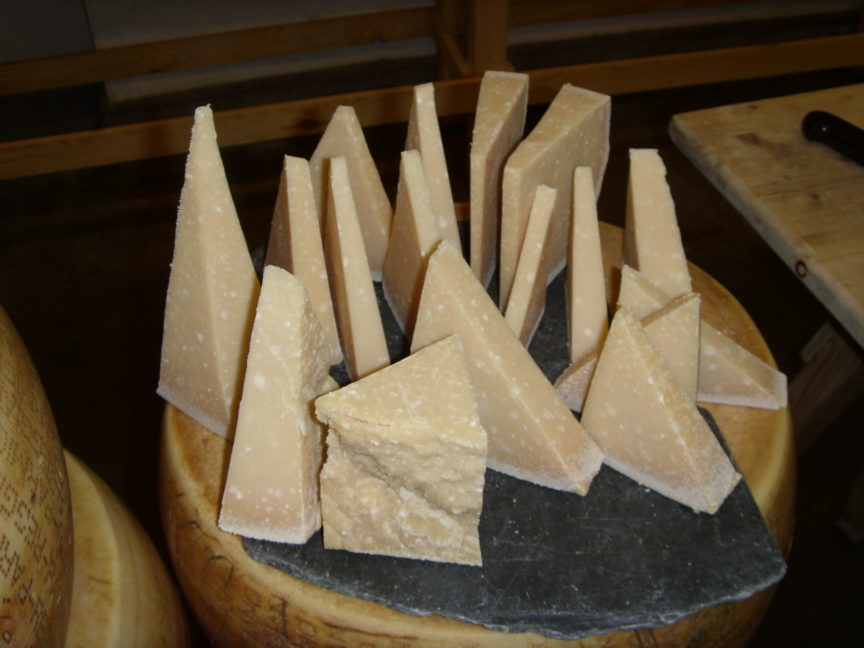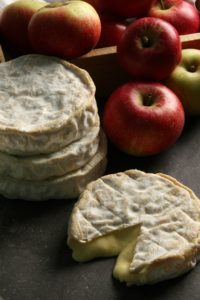People with diabetes could well be predisposed to like cheese as it will not mess with blood sugar levels if eaten alone; add in a cracker and that changes.
For many people cheese is their downfall, more so than chocolate: it’s a simple inability to know when to stop. Moving beyond your basic mature chedder, there are so many sorts of cheeses that it can be a lifetime of discoveries, with varieties soft, hard, runny, crumbly, smelly, infected with bacteria (that’s the blue in your blue cheese folks) and from many a source beyond your common cow. Ewe’s milk, goat’s milk, buffalo milk and so on. Likewise, there’s as many recipes for cheeses as there are varieties of this staple dairy product, stick it in a salad, or make a cheese sauce or just use it as a topping in itself (like grated parmesan).
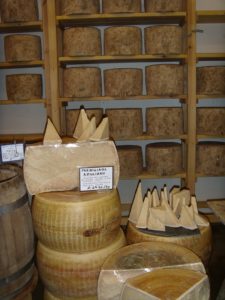 What’s less well known is what a ‘portion’ of cheese is. An easy analogy is that it should be about 30g, which would be a piece about the size of a match-box. Yes, yes, Swiss cheese has holes in it, so it would be a little bigger, but no wonder people over do it, and no wonder many a restaurant serves a selection of cheeses at the end of a meal as a treat (and often a quite costly one at that). Cheese should be valued for its variety, its flexibility as an ingredient, and as a precious addition to most people’s diets, and not one to be taken for granted or over indulged. Worship it, but in small but delectable servings.
What’s less well known is what a ‘portion’ of cheese is. An easy analogy is that it should be about 30g, which would be a piece about the size of a match-box. Yes, yes, Swiss cheese has holes in it, so it would be a little bigger, but no wonder people over do it, and no wonder many a restaurant serves a selection of cheeses at the end of a meal as a treat (and often a quite costly one at that). Cheese should be valued for its variety, its flexibility as an ingredient, and as a precious addition to most people’s diets, and not one to be taken for granted or over indulged. Worship it, but in small but delectable servings.
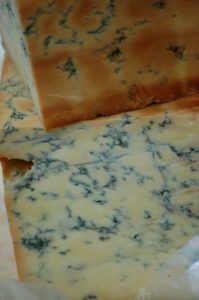 There is a huge array of British cheeses to choose from before you need to head elsewhere to find one you like. If you want to learn more, it’s British Cheese Week from 1st – 7th June. Did you know that there are more than 700 named British cheeses produced in the UK, including feta and quark, as well as the more traditional British cheddar and goats cheeses. There is a type of cheese available whatever the dish or occasion.
There is a huge array of British cheeses to choose from before you need to head elsewhere to find one you like. If you want to learn more, it’s British Cheese Week from 1st – 7th June. Did you know that there are more than 700 named British cheeses produced in the UK, including feta and quark, as well as the more traditional British cheddar and goats cheeses. There is a type of cheese available whatever the dish or occasion.
Devon dairy wins awards
Over in the West Country, Devon’s Sharpham Cheese Dairy won several accolades, including the Best Soft Cheese Trophy in 2013 and 2014 at the Devon County Show, and two Golds at the 2014 a British Cheese Awards, part of British Cheese Week. Last year more than 1,000 products were entered into these awards, which were started in 1984. Sharpham Cheese Dairy won a Gold for its Sharpham Rustic in the semi-soft cow category and a Gold for its Sharpham Ticklemore Goat in the goat (up to three months) category. The dairy won Silver for its Sharpham Cremet in the soft white goat category and a Bronze for each of its Sharpham Savour and Sharpham Rustic Chives & Garlic.
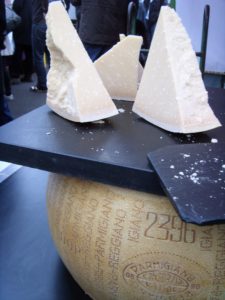 The dairy has a team of nine cheese makers responsible for the meticulous attention which goes into producing its range of cheeses, which we have been continually improving over the 33 years of cheese making at the farm, which is based on the Sharpham Estate near to Totnes, a thousand-year-old farm which consists of five hundred acres. Cheese cutting moulding and turning, all performed entirely by hand, traditional methods that contribute to the taste profile and quality of the cheeses in the estate’s portfolio. Visiting cheese lovers can view some of the making process first hand through the windows of the creamery. Although cheese making starts at six in the morning, after the cows have been milked, most of the action is between nine o’clock and midday. The cheeses are made using the rich milk from the farm’s Jersey cattle with vegetarian rennet and are unpasteurised.
The dairy has a team of nine cheese makers responsible for the meticulous attention which goes into producing its range of cheeses, which we have been continually improving over the 33 years of cheese making at the farm, which is based on the Sharpham Estate near to Totnes, a thousand-year-old farm which consists of five hundred acres. Cheese cutting moulding and turning, all performed entirely by hand, traditional methods that contribute to the taste profile and quality of the cheeses in the estate’s portfolio. Visiting cheese lovers can view some of the making process first hand through the windows of the creamery. Although cheese making starts at six in the morning, after the cows have been milked, most of the action is between nine o’clock and midday. The cheeses are made using the rich milk from the farm’s Jersey cattle with vegetarian rennet and are unpasteurised.
The cheeses are available online at www.sharpham.com and in delis and independent stores across the UK.
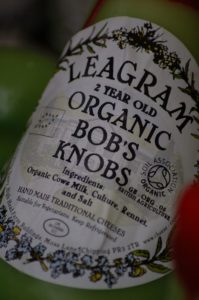 Sharpham Rustic: The Plain Rustic is a semi-hard, unpasteurised cheese made with Jersey cow milk. It has a fresh, lemony, creamy flavour when young, developing a lovely nutty taste when mature. This cheese is handmade.
Sharpham Rustic: The Plain Rustic is a semi-hard, unpasteurised cheese made with Jersey cow milk. It has a fresh, lemony, creamy flavour when young, developing a lovely nutty taste when mature. This cheese is handmade.
Sharpham Ticklemore Goat: The Sharpham Ticklemore Goat is a pasteurised, semi-hard goat milk cheese made with vegetable rennet. It’s named after a street in Totnes where the popular Ticklemore Cheese Shop is located.
The nutritional value of cheese
The amount of nutrients in cheese vary due to the composition of the milk used and it’s made, but cheese includes protein, calcium, Vitamins A, B2 and B12 as well as zinc and phosphorous. If you are lactose intolerant, many cheeses, particularly aged cheeses such as Cheddar and Swiss, contain little or no lactose and are often well tolerated. So what about the fat? In recent times, saturated fat found in meats, eggs, cheese, butter, whole milk, lard and some oils was considered a primary cause of heart disease.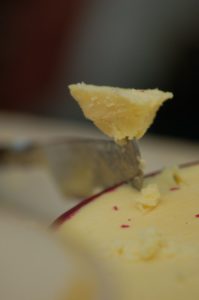 However, times have changed and now further research is showing that saturated fat has a minimal impact on heart disease risk, so we can all enjoy more cheese as well as the other previously ‘no go’ foods. But calories should still be considered, but to keep those down, grate or sprinkle harder cheeses over your dishes for a treat.
However, times have changed and now further research is showing that saturated fat has a minimal impact on heart disease risk, so we can all enjoy more cheese as well as the other previously ‘no go’ foods. But calories should still be considered, but to keep those down, grate or sprinkle harder cheeses over your dishes for a treat.
Per serving counts as 2 of your 5-a-day and contains over contains 1/3 of the RDA for iron and magnesium, 28% of the RDA for calcium, over 90% of the RDA for folic acid and more than 100% of the RDA for vitamin C.
Food features and recipes like this appear in the Desang Diabetes Magazine, our free-to-receive digital journal. We cover diabetes news, diabetes ‘kit’ and information on food suitable for maintaining good blood glucose control or a diabetic diet, including a regular Making Carbs Count column.

